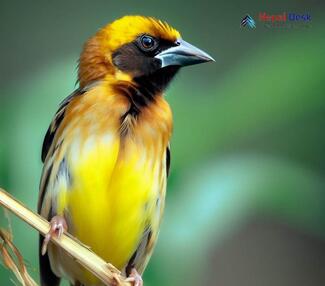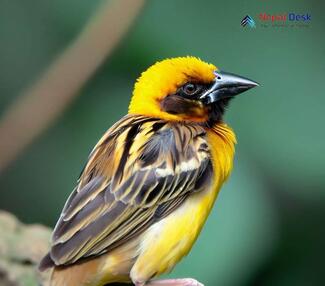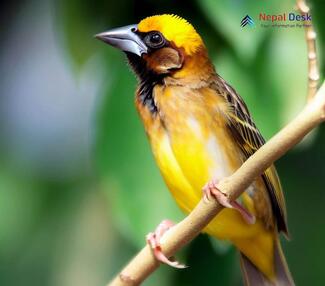Nepal is a treasure trove of diverse flora and fauna, and one of its most fascinating inhabitants is the Baya Weaver bird (Ploceus philippinus). Known for their remarkable nest-building abilities, these small birds have captured the attention and admiration of bird enthusiasts worldwide. In this article, we will take a closer look at the Baya Weaver in Nepal, exploring their habitat, nesting behaviors, and what makes them truly special.
Habitat and Distribution
The Baya Weaver is a species primarily found in South Asia, across countries such as India, Pakistan, Bangladesh, Sri Lanka, Myanmar, and Nepal. In Nepal, it can be commonly spotted in the Terai region, near cultivated areas like rice fields and sugarcane plantations or wet grasslands close to water sources.
Nest Building: A Marvelous Instinctual Skill
Baya Weavers are social birds that build their nests in colonies. The males are the primary architects, investing tremendous effort in weaving intricate nests made of grass or reed blades. The nests are typically built on tall trees or sturdy structures such as electrical poles to keep them safe from predators.
Nests have an ingenious design with a long entrance tunnel that opens into a spacious chamber. What's truly remarkable is how male Baya Weavers showcase their nests to attract females during the breeding season. Females inspect the nests and choose their mates based on nest craftsmanship—an interesting form of natural selection.
Diet and Breeding Pattern
Like other weaverbirds, the Baya Weaver's diet consists mainly of seeds and insects. During monsoon season when food is abundant, the Baya Weavers breed prolifically. Their breeding season starts around April and lasts until early October.
Conservation Efforts
The Baya Weaver has not been regarded as an endangered species in Nepal, as their population has been stable so far. However, rapid urbanization and habitat loss due to agricultural expansion can pose potential future threats. Conservationists are increasingly promoting awareness about the importance of preserving wetlands and grasslands, which not only provide a habitat for Baya Weavers but also support diverse ecosystems.
In Conclusion
The Baya Weaver in Nepal is a fascinating example of nature's architectural mastery at work. With their exceptional nest-building skills and their importance as an integral part of the ecosystem, these tiny birds truly deserve our admiration and attention. As travellers or birdwatchers visiting Nepal, we should celebrate the rich biodiversity that the country offers and actively contribute to preserving habitats for birds like Baya Weavers and other amazing species.




